Northern California is a jewel for unforgettable moments
By Sara Robertson
California isn’t only the land of movie stars and sunny beaches; it’s home to vast stretches of towering redwoods, sprawling valleys of green vineyards and richly historic cities like San Francisco, Sacramento and even—you can discover it!—Eureka. All of this you’ll find in Northern California.
Whether you’re planning a meeting replete with history buffs, the outdoorsy types or a group that wants to get old-school elegant, NorCal is where you’ll find the sweet spots. The options are endless (and your attendees will hope their visit is, too).
Local Expert Tip
“Northern California is home to top-tier meetings destinations set across a diverse array of picturesque backdrops. Anchored by iconic San Francisco, the Bay Area is home to innovation-forward San Jose and San Francisco Peninsula, culture-rich Oakland and world-renowned wine country. California’s capital, Sacramento, is the gateway to the state’s Gold Country region and home to the farm-to-fork movement and a stunning culinary scene. Just beyond, Lake Tahoe offers year-round mountain experiences for conferences and retreats of all sizes set in spectacular natural landscapes.”
– Caroline Beteta, president & CEO, Visit California
5 Reasons Meeting Profs Love NorCal
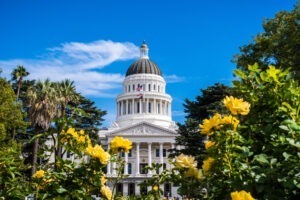
If you find yourself in historic San Francisco, you don’t want to miss out on an Alcatraz Tour. Not only will your group creep out to the audio tour of The Rock, home to Al Capone and Machine Gun Kelley; they will also learn of its role during the Civil War and in the American Indian Rights Movement. Then there are those unmatched views of the city skyline and Golden Gate Bridge.
Take a day trip to Half Moon Bay, a picturesque coastal town easily accessible from San Francisco via scenic Highway 1, where you can take in dramatic views of bluffs and beaches. The town is near where “Chasing Mavericks,” a film about one of the world’s best surf breaks, was filmed; and it has no shortage of outdoor fun, from hiking trails to a renowned pumpkin festival.
Downtown Sacramento is a metro hub, with plenty to eat, see and do; but don’t pass up a visit to the state’s grandiose capitol building. The State of California Capitol Museum is where to learn all about the colorful history of the former Bear Republic in the same building the state’s history is being made today. Tours of both the Capitol building and Capitol Park are available.
Take in the wondrous beauty of Lake Tahoe’s crystal-clear water and the seasonally snowy peaks that surround it on a lake tour aboard the M.S. Dixie II. The 500-passenger, award winning cruising vessel is the largest in South Lake Tahoe, and is available for daytime cruises, sunset and dinner cruises with live entertainment and private charter.
Napa Valley is an epicenter of eco-luxury and famous for its premier California wines. There’s no better way to take in the sprawling, sun-soaked vineyards than a winery tour, where you and your attendees can learn just how these prized grapes go from vine-to-glass. Napa Valley is home to some 400 wineries, and Visit Napa Valley’s website offers a directory to find the best fit for your group.
California Wine Countries Decanted
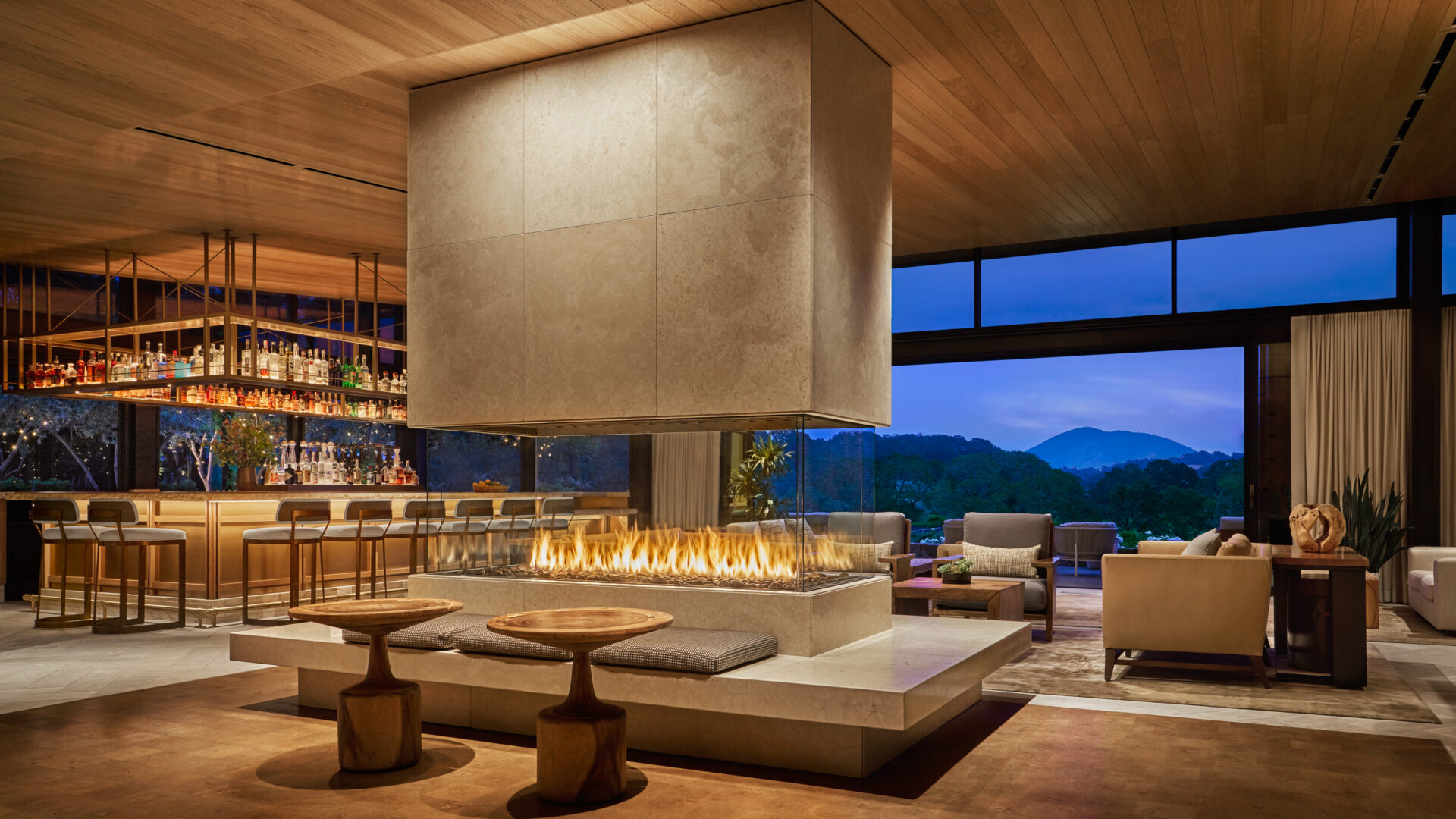
The Golden State could be renamed the Red Wine Coast, except that vintners there also produce award-winning whites. Some of the most renowned and up-and-coming wine regions in the country fly the Bear Flag. In fact, more than 80% of wine made in the United States is bottled in California. It is home to 150 viticultural areas and 49 of 58 counties grow wine grapes, according to California Wine Club. From Amador County in the Sierra Foothills above Sacramento, Lodi in the Central Valley, Paso Robles and Monterey on the Central Coast to what is simply known as The Wine Country—Napa and Sonoma counties—each brings its own notes of accompanying hospitality flavor. We break down the terroir of three of our favorite Northern California American Viticultural Areas (AVAs) here.
Napa Valley AVA
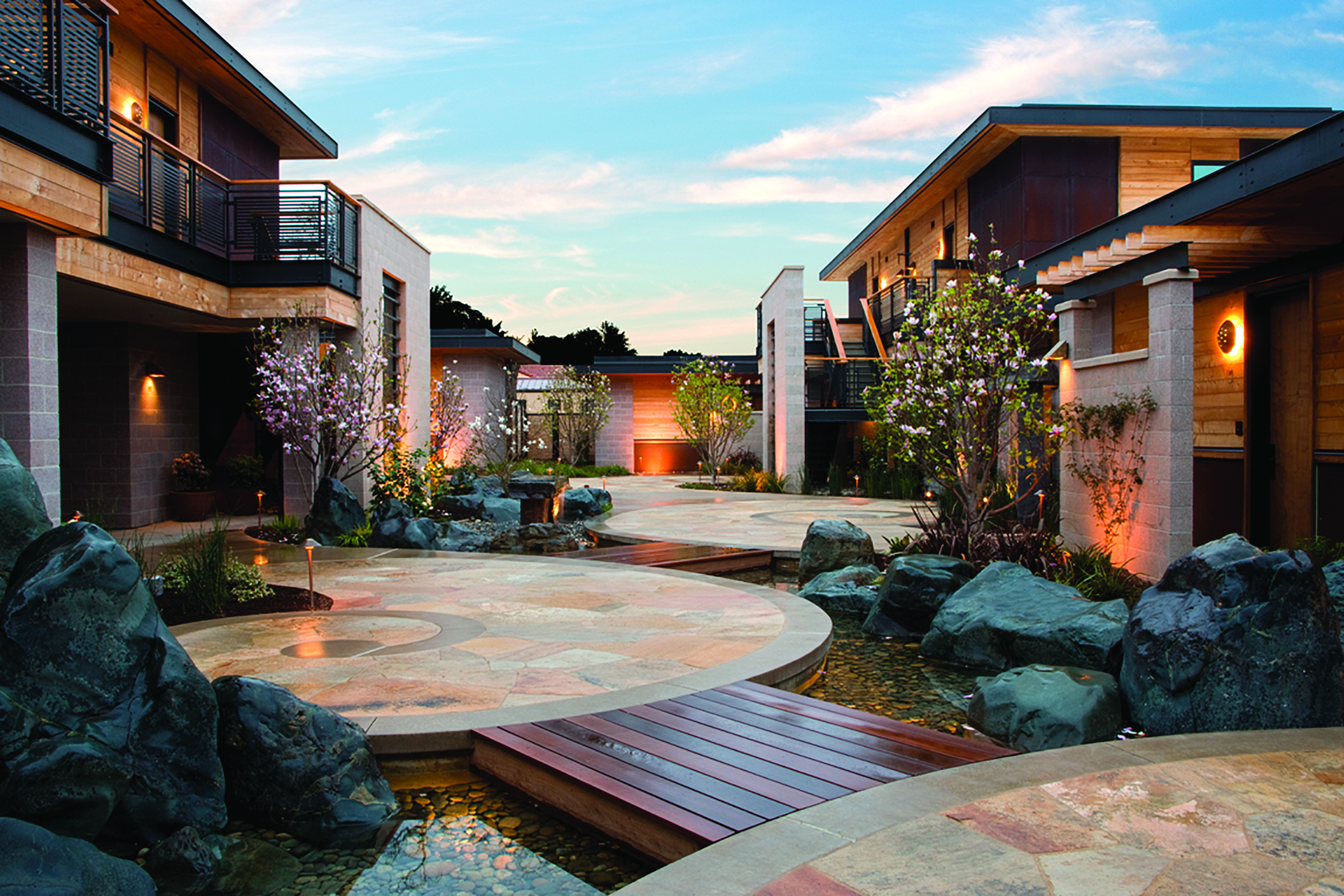
The most celebrated wine country is still the rich valley north of San Francisco. The area, which is home to 16 nested AVAs, is steeped in a laid-back, quiet luxury of rolling, vine-covered hills, fine dining and well-appointed hospitality. This is where companies take top performers to show their appreciation, brainstorm the next big idea with the execs and team-build in a blending room. Meetings in a wine cave are not soon forgotten.
The Meritage Resort & Spa, on the heels of a $25-million renovation, is one of the largest event centers in the valley with 467 guest rooms, 80,000 sq. ft. of indoor and outdoor meeting space in a campus environment. On-site opportunities to take in the destination include tasting rooms, an underground Estate Cave, a chic six-lane bowling lounge, two pools and 22,000-square-foot Spa Terra.
Four star, boutique Bardessono Hotel & Spa is a LEED Platinum-certified oasis in walkable Yountville, home of Thomas Keller’s legendary French Laundry restaurant. It features spa suites for privacy to eliminate awkward encounters with colleagues in a robe. Breakout options include cycling tours, stargazing and elevated scavenger hunts.
Sonoma Valley AVA
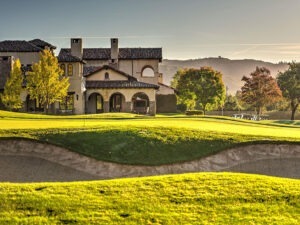
Known as the birthplace of California wine, grape growing in the area that enjoys evening ocean fog through the Petaluma Gap dates back to 1823, when Franciscan friars at Mission San Francisco Solano planted the first vines. The destination is both expansive and diverse, boasting 425 wineries and the up-and-coming Healdsburg area with its adorable town square and location at the intersection of the renowned wine regions of Russian River Valley, Dry Creek and Alexander Valley.
Five star, 130-room Montage Healdsburg and soon an adjacent 108-room luxury Appellation Healdsburg boast comfortable opulence. Montage is 258 acres dotted with oak trees and luxury bungalows arrayed around the main lobby with indoor-outdoor Hazel Hill, an award-winning French-inspired restaurant.
Closer to where it all began in the city of Sonoma, historic Fairmont Sonoma Mission Inn and Spa serves up wellness and fresh air at Sonoma Golf Club and a storied spa experience with 226 guest rooms designed to relax guests at every turn.
Monterey AVAs
This wide-ranging destination south of Santa Cruz encompasses nine AVAs and is the top source for Chardonnay grapes in the state. Coastal vineyards fed by Salinas River are popular stops for those attending conferences at Monterey Convention Center. Grapes as well as visitors to Carmel Valley are protected from the chill off Monterey Bay and thrive in the Mediterranean temperatures and accommodations.
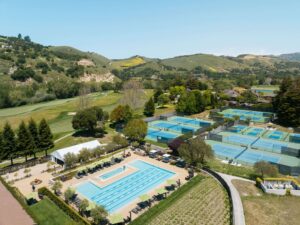
With water, city and direct convention center access, the renovated ballrooms at Portola Hotel & Spa in Monterey Bay are an attractive package. A $1.8 million enhancement of De Anza and Bonsai ballrooms to mirror the nearby clear blue water was unveiled in February and new restaurant concepts are still to come.
Carmel Valley Ranch or The Ranch as it is known to locals has curated a collection of artisans that include a dirt whisperer, trail blazer, head of the herd and a “wine guy,” acclaimed winemaker Ian Brand of I Brand Family Wines. The property, which is part of the Unbound Collection by Hyatt, recently completed a furnishing and menu refresh that included the creation of a new outdoor bar with fun poolside lounge seating and day beds.
California’s Essential History
Honoring and Respecting Native Land
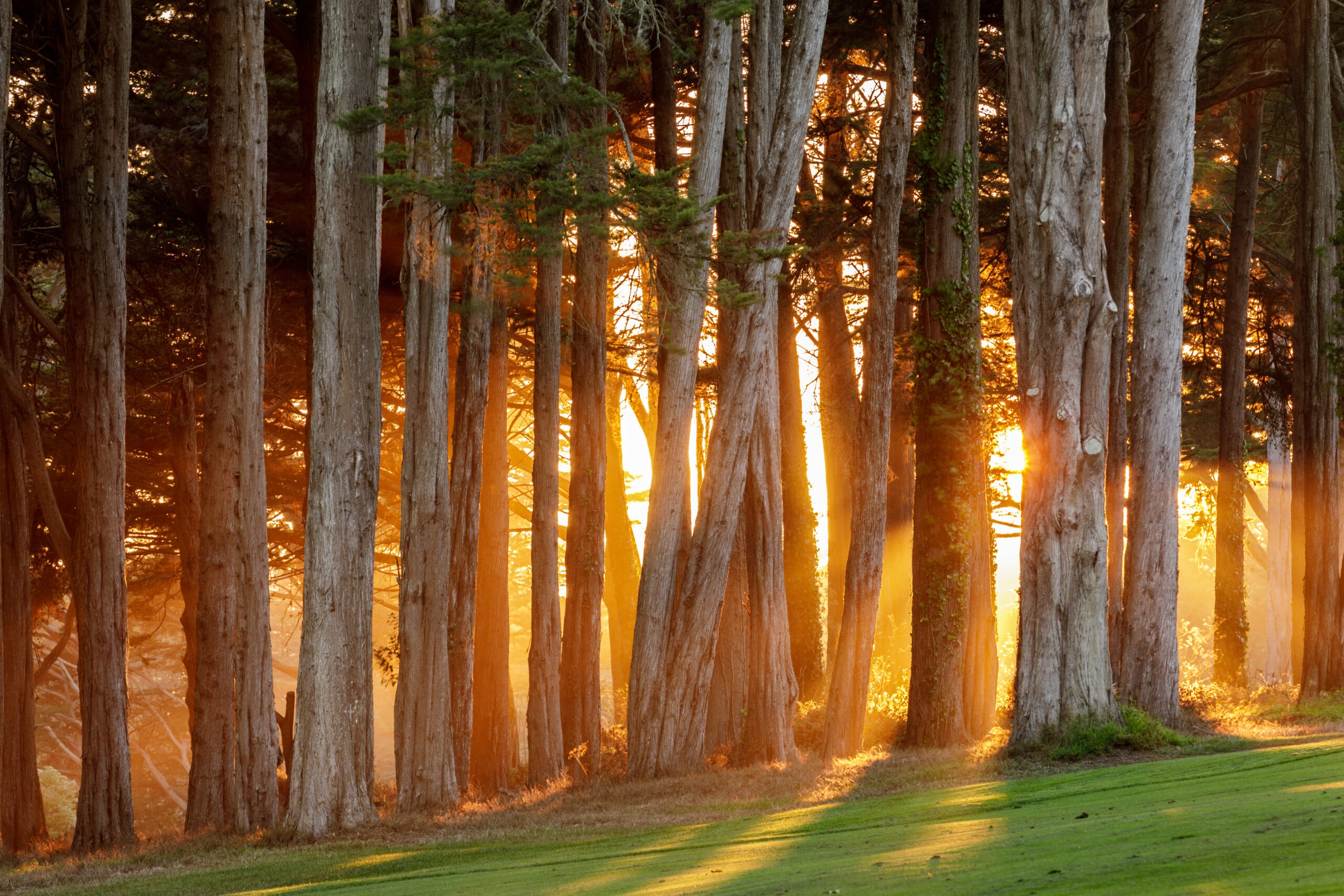
Before California was the U.S. state we know today, it was home to numerous Native American communities for an estimated 13,000 to 15,000 years. Much of the land that we now call California remains unceded. Over 100 tribes and bands lived on the land. Estimates of the population before colonization range from 100,000 to 300,000 people.
In the mid-16th century, European explorers from Spain and England set foot on the Pacific Coast. Myths arose in European circles that the area was an island, and to that we can attribute its present-day name. California was the island home to the Black woman warriors ruled by Queen Califia in Spanish author Garci Rodríguez de Montalvo’s novel of that period, “Las Sergas de Esplandían (The Adventures of Esplandían).”
Throughout the next two centuries, Spain would colonize much of California, and many Native Americans died from foreign diseases and, later, in the California genocide of the 19th century.
The San Francisco Presidio
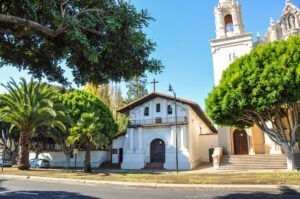
Numerous regions of Northern California mark important historic sites, such as The San Francisco Presidio, which was the traditional territory of the Yelamu, a local tribe of the Ramaytush Ohlone peoples. The Spanish Empire used it as a military base from which its army defended its claim over the San Francisco Bay and Mission Dolores, now in San Francisco’s Mission District. The U.S. Army took control in the mid-1800s and used it as a military base.
The Presidio is now a national park site and National Historic Landmark District. Under the management of The Presidio Trust, with the Partnership for the Presidio, historians, educators, anthropologists and archeologists work to preserve its history and provide accessible education to the public. Every dollar spent goes back into the park, and there are numerous ways to explore its history, from park ranger talks to miles of bike trails; it’s a great option for meeting attendees to gain awareness of this particular patch of California history, from Native Ohlone land to U.S. Army occupation.
The Gold Rush
After gold was discovered in Coloma, California, about 36 miles northeast of Sacramento in 1848, the population boomed as approximately 300,000 people came to search for riches. Settlers came from the United States and all over the world, including African Americans, immigrants from Mexico, Peru, China and throughout Europe, from England to Italy to Russia.
By 1852, San Francisco had grown from a small settlement of 200 to a city with a population numbering about 36,000 people. The Gold Rush was centered around Northern California, and roads, churches and schools were built as towns sprang up rapidly. With the massive rise in settler population, California pursued statehood, and it officially joined the Union in 1850.
As settler population grew, Native Californians faced increasing hardship from disease, starvation, and the 19th century California genocide, during which U.S. government agents and private citizens systematically killed thousands of Indigenous peoples of California. The present-day government of California and governmental institutions continue to acknowledge this history and support research and education to gather information about it to educate future generations.
Marshall Gold Discovery State Park stands in Coloma, where it all began. There, visitors can explore a dynamic museum, visit historic buildings and even pan for gold in the American River. San Francisco City Guides also offers guided walking tours with the perspective of how the Gold Rush shaped the city to what it is today.
This article appears in the May/June 2024 issues. You can subscribe to the magazine here.






